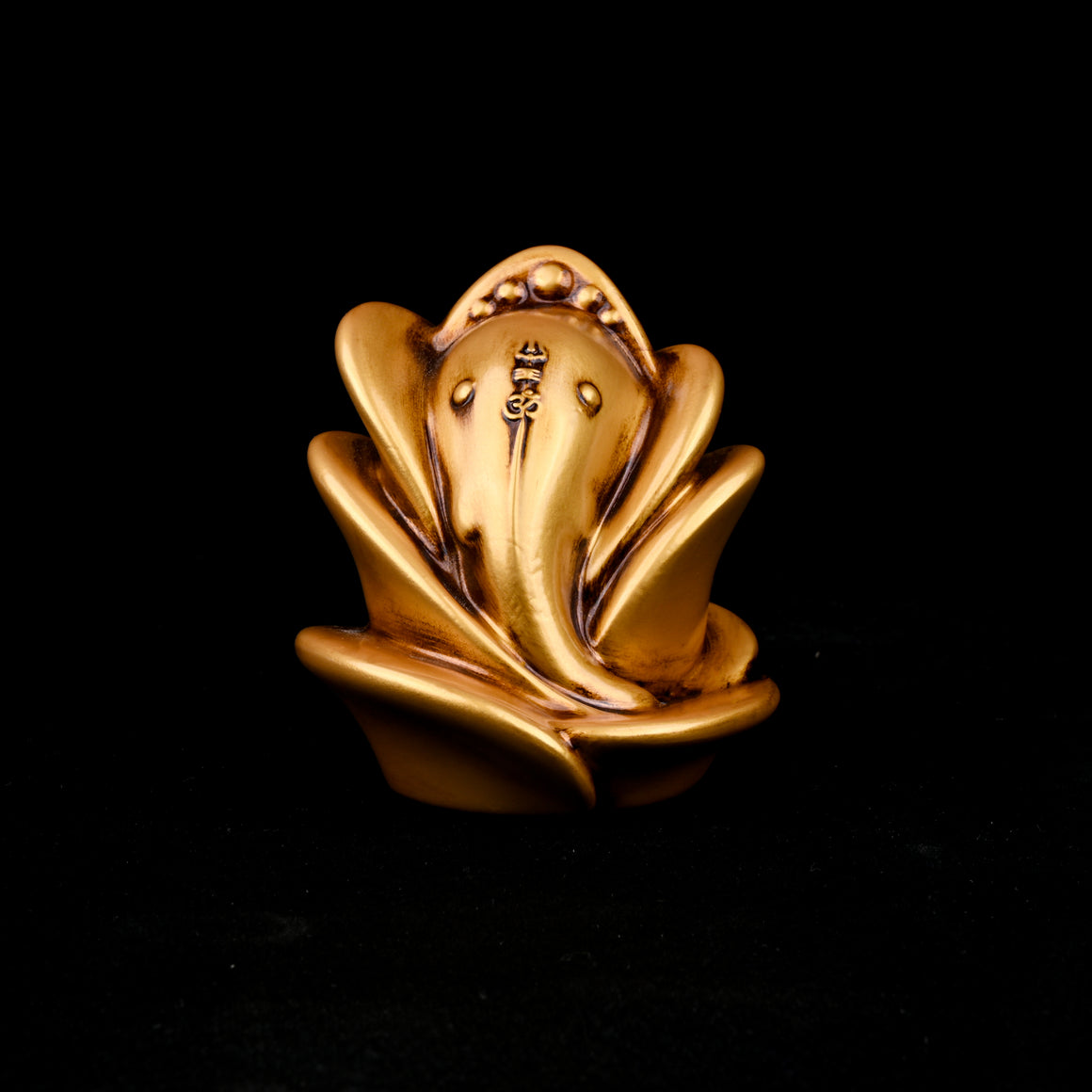Ganpati Murti, also known as Ganesh idol, is one of the most cherished symbols in Hindu culture. Lord Ganesha, the deity represented by this idol, is revered as the remover of obstacles and the harbinger of wisdom and prosperity. The Ganpati Murti not only holds deep spiritual significance but also represents a rich tradition of art and devotion.
The Mythological Origins of Ganpati Murti
The Ganpati Murti is deeply rooted in Hindu mythology. Lord Ganesha, often depicted with an elephant’s head and a human body, is the son of Lord Shiva and Goddess Parvati. According to ancient legends, Parvati created Ganesha from the sandalwood paste she used for her bath and set him to guard her privacy. When Lord Shiva encountered Ganesha and did not recognize him, a conflict ensued, leading to Ganesha’s head being severed. To pacify Parvati, Shiva replaced Ganesha’s head with that of an elephant, thus bestowing him with his iconic appearance.
This mythological backstory imbues the Ganpati Murti with profound symbolic meanings. The elephant head represents wisdom and the capacity to overcome hurdles, while the large belly signifies the ability to digest and handle all experiences in life, both good and bad.
Ganesh Chaturthi: The Festival of Ganpati Murti
The Ganesh Chaturthi festival is a major celebration dedicated to Lord Ganesha. It marks the birth of the deity and is observed with great enthusiasm, particularly in Maharashtra and other parts of India. The festival typically lasts for 10 days, starting on Chaturthi, the fourth day of the waxing moon in the Hindu month of Bhadrapada, and concluding on Anant Chaturdashi.
During Ganesh Chaturthi, Ganpati Murtis of various sizes and designs are crafted and installed in homes and public spaces. The idols are elaborately decorated with flowers, lights, and vibrant colors, reflecting the festive spirit of the occasion. Public processions, devotional singing, dancing, and communal feasts are common, creating a lively and joyous atmosphere.
The culmination of the festival is marked by the immersion of the Ganpati Murti in water, a ritual known as Visarjan. This act symbolizes the deity’s return to his celestial abode and signifies the temporary nature of earthly life.
Artistic and Craftsmanship of Ganpati Murti
Creating a Ganpati Murti is a skilled art form that combines creativity with devotion. Traditional artisans use clay, plaster of Paris, or other materials to sculpt the idols. The process begins with molding a framework, followed by applying layers of the chosen material to shape the idol. Artisans then paint and embellish the Ganpati Murti with intricate designs and vibrant colors.
Regional styles vary, reflecting local artistic traditions and preferences. In Maharashtra, Ganpati Murtis often feature elaborate decorations and detailed craftsmanship. In contrast, South Indian Ganpati Murtis might be simpler and more understated. Each artistic style tells a unique story and adds to the rich tapestry of Ganesh celebrations.
Symbolism Behind Ganpati Murti
The Ganpati Murti is not just a decorative item; it is imbued with deep symbolism. The elephant head represents wisdom, understanding, and the ability to think logically. The large ears symbolize the importance of listening and hearing, while the trunk signifies adaptability and the capacity to handle various challenges.
The Ganpati Murti’s four hands usually hold symbolic items. The lotus flower represents purity and spiritual enlightenment. The modak (sweet dumpling) signifies the rewards of a devoted and righteous life. The goad and noose symbolize control over desires and the ability to remove obstacles. Each element of the Ganpati Murti serves as a reminder of the values and virtues that Lord Ganesha embodies.
Eco-Friendly Ganpati Murti Initiatives
In recent years, there has been a growing awareness about the environmental impact of Ganpati Murti celebrations. Traditional idols made from plaster of Paris and synthetic paints can contribute to water pollution and environmental degradation when immersed in water bodies. In response, eco-friendly Ganpati Murtis made from natural, biodegradable materials such as clay, paper mache, and natural dyes have become popular.
These eco-friendly alternatives ensure that the celebration of Ganesh Chaturthi remains respectful to the environment. Many communities and organizations now promote and encourage the use of such sustainable options to minimize the ecological footprint of the festival.
The Role of Ganpati Murti in Personal Devotion
For many devotees, the Ganpati Murti is a focal point of personal devotion and spiritual practice. Placing a Ganpati Murti in one’s home is believed to invite positive energy, peace, and prosperity. The idol serves as a constant reminder of Lord Ganesha’s blessings and guidance.
Daily rituals and prayers performed in front of the Ganpati Murti include offering flowers, incense, and sweets, and reciting mantras. These practices help devotees connect with the divine and seek Lord Ganesha’s blessings for overcoming obstacles and achieving success.
The Global Reach of Ganpati Murti
The reverence for Ganpati Murti extends beyond India, reaching Hindu communities around the world. In countries like the United States, Canada, the United Kingdom, and Australia, Ganesh Chaturthi is celebrated with enthusiasm, reflecting the global diaspora’s commitment to preserving their cultural and spiritual heritage.
In these regions, community gatherings, cultural events, and processions featuring Ganpati Murtis provide opportunities for the diaspora to connect with their roots and share their traditions with others. This global celebration not only reinforces cultural identity but also fosters intercultural understanding and appreciation.
Conclusion
The Ganpati Murti stands as a powerful symbol of wisdom, prosperity, and the removal of obstacles. Its rich mythology, artistic variations, and the fervor of Ganesh Chaturthi celebrations highlight its importance in Hindu culture. As we continue to embrace and celebrate the Ganpati Murti, we honor the values and virtues that Lord Ganesha represents, while also adapting to modern practices that respect both tradition and the environment.

Leave a Reply
You must be logged in to post a comment.